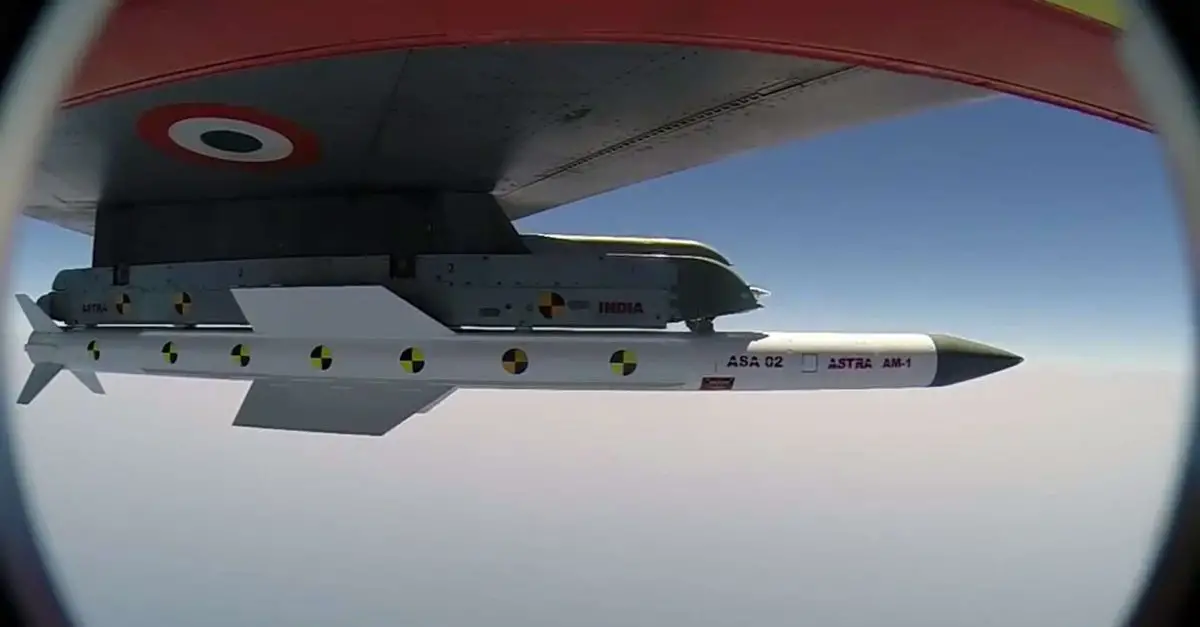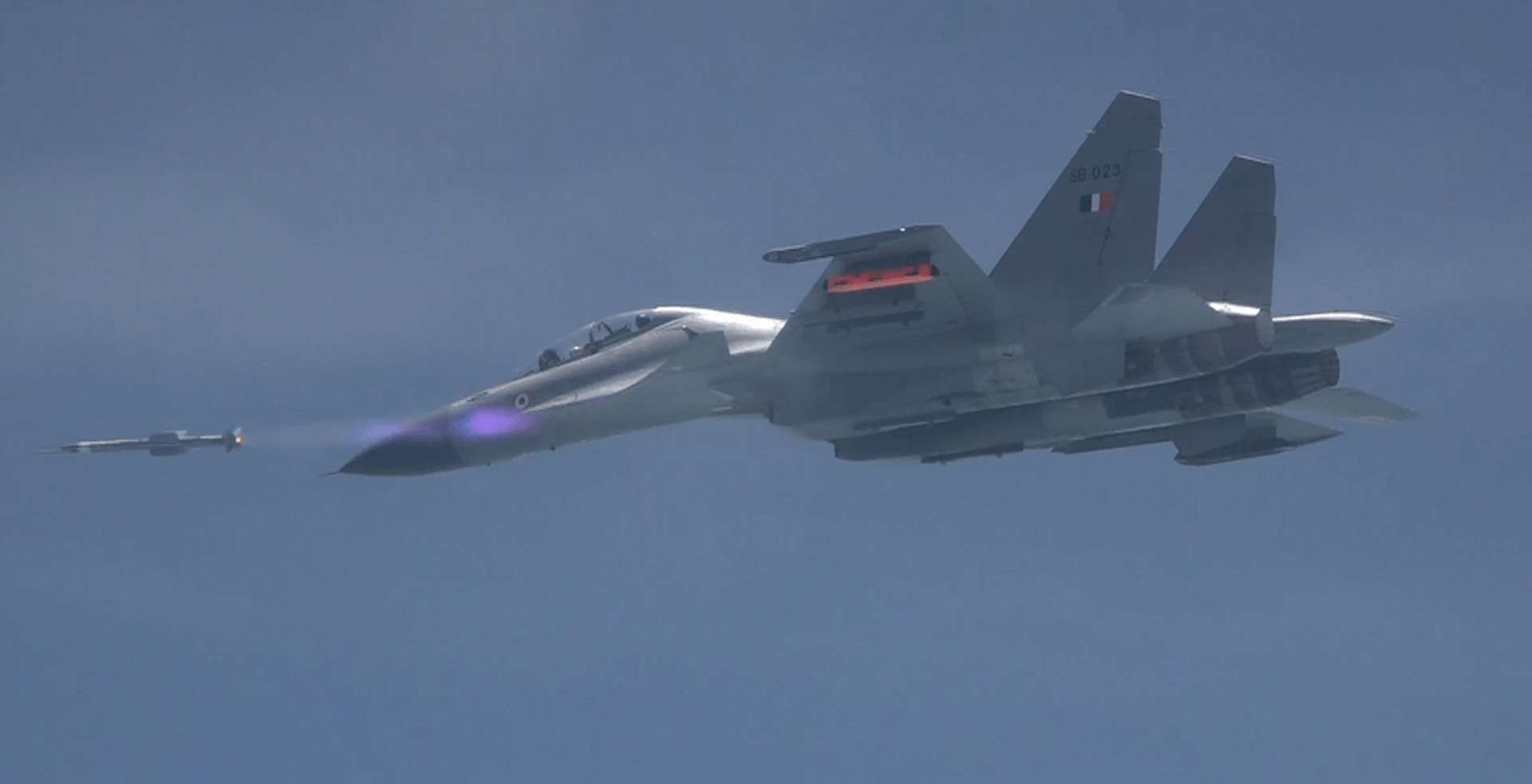Breaking News
Indian Air Force approves the production of 200 Astra Mark 1 to replace Russian air-to-air missiles.
As reported by NDTV on August 5, 2024, the Indian Air Force (IAF) has authorized the production of 200 Astra Mark 1 air-to-air missiles. This decision was made during a recent visit by IAF Deputy Chief Air Marshal Ashutosh Dixit to Hyderabad. The clearance was granted to the Defence Research and Development Organisation (DRDO) and Bharat Dynamics Limited (BDL), marking a step forward in replacing all Russian-origin long-range air-to-air missiles of the IAF with indigenous solutions.
Follow Army Recognition on Google News at this link

The Astra program began in the early 1990s, with the project officially sanctioned in 2004. Initial versions faced challenges, leading to multiple redesigns to address control issues and performance deficiencies. (Picture source: Indian MoD)
The Astra missile is a modern beyond-visual-range air-to-air missile, in service since 2019, and used by both the IAF and Indian Navy. The missile family includes the operational Astra Mk-1, as well as the Astra Mk-2, Mk-3, and Astra-IR, which are in various phases of trials and design. The Astra Mk-1, measuring 3.84 meters in length, 178 millimeters in diameter, and weighing 154 kilograms, carries a high-explosive pre-fragmented warhead of 15 kilograms and is equipped with a radio proximity fuze. It is powered by a solid-propellant rocket engine, achieving speeds up to Mach 4.5 and operating at altitudes up to 20 kilometers.
The Astra Mk-1’s guidance system includes a fiber-optic gyro-based inertial navigation system for mid-course guidance and an active radar homing system for terminal guidance. It has an operational range of 110 kilometers in head-on chase mode and 20 kilometers in tail chase mode, with the range varying depending on the launch altitude. The missile is designed to be launched from various aircraft platforms, including the Sukhoi Su-30MKI, MiG-29K, and HAL Tejas Mk.1/1A, with maximum range achieved from higher altitudes.

The missile is designed to be launched from various aircraft platforms, including the Sukhoi Su-30MKI, MiG-29K, and HAL Tejas Mk.1/1A, with maximum range achieved from higher altitudes. (Picture source: Indian MoD)
The Astra program began in the early 1990s, with the project officially sanctioned in 2004. Initial versions faced challenges, leading to multiple redesigns to address control issues and performance deficiencies. By 2013, these efforts produced a lighter and more efficient missile, with the Astra Mk-1 first tested in air in 2014 and undergoing extensive trials to validate its capabilities, including performance under electronic countermeasures and high-G maneuvers.
Development is ongoing for the Astra Mk-2 and Mk-3 variants. The Astra Mk-2 aims to extend the missile's range to 160 kilometers using a dual-pulse rocket motor and includes technologies like a laser proximity fuze and an AESA radar seeker. The Astra Mk-3, developed with Russia, features a Solid Fuel Ducted Ramjet engine, enhancing its range and speed, and is positioned to rival missiles such as the AIM-260 and Meteor.
DRDO has also developed a surface-to-air variant, known as the VL-SRSAM, intended to replace the Indian Navy's Barak-1 system. The VL-SRSAM, tested successfully in 2021, features a vertical launch system and high maneuverability, guided by the Revathi radar.


























